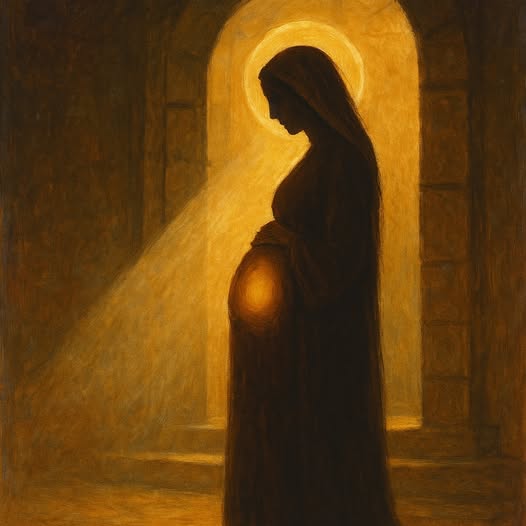
The doctrine of the Pre-Tribulation Rapture, which suggests that believers will be taken up to heaven before a seven-year period of tribulation, has become a popular teaching among certain Christian circles. However, this doctrine is not without its controversies, and many scholars and theologians argue that it lacks solid biblical foundation. Here are ten reasons to question the doctrine of a Pre-Trib Rapture.
1. Absence of Explicit Scriptural Support
The most significant issue with the Pre-Trib Rapture is the absence of explicit biblical texts that clearly describe such an event. No single verse or passage directly states that the church will be removed from the earth before the Tribulation period. Instead, proponents rely on inferences from various scriptures, but these are often open to interpretation and do not conclusively support the Pre-Tribulation view.
2. Misinterpretation of 1 Thessalonians 4:16-17
Proponents of the Pre-Trib Rapture often cite 1 Thessalonians 4:16-17, which describes the catching up of believers to meet the Lord in the air. However, this passage does not specify the timing of this event in relation to the Tribulation. The context suggests it is a general description of the resurrection and the gathering of believers at Christ’s return, not necessarily before a tribulation period.
3. The Church’s Presence During Tribulation
Scripture often emphasizes that believers will face tribulation. Jesus himself stated in John 16:33, “In this world, you will have trouble. But take heart! I have overcome the world.” Moreover, Revelation 7:14 speaks of a great multitude who have come out of the “great tribulation,” suggesting that believers will indeed experience it, rather than being removed beforehand.
4. Misunderstanding the Nature of God’s Wrath and Protection
Pre-Tribulationists argue that the church must be removed before the Tribulation because it is viewed exclusively as a period of God’s wrath. However, the Bible distinguishes clearly between trials, tribulations, and God’s ultimate wrath. Believers are assured deliverance from God’s wrath (Romans 5:9), but not immunity from trials or suffering.
A key passage cited to justify removal before the Tribulation is Revelation 3:10: “Because you have kept my word about patient endurance, I will keep you from the hour of trial…” Yet, the original Greek phrase “τηρήσω ἐκ (tērēsō ek)” doesn’t necessarily imply removal from tribulation but rather protection through it. This aligns closely with Christ’s own words in John 17:15, where He explicitly prays, “I do not ask that you take them out of the world, but that you keep them from the evil one,” again using “τηρήσῃς αὐτοὺς ἐκ (tērēsēs autous ek).”
Thus, the Tribulation should more accurately be viewed as a period of testing and purification, during which God protects His faithful, rather than necessarily removing them entirely from the experience.
5. The Timing of the Rapture in Relation to the Second Coming
Matthew 24:29-31 describes the gathering of the elect immediately after the tribulation, at the time of Christ’s visible return. This suggests that the Rapture and the Second Coming are simultaneous events rather than separate ones, as the Pre-Tribulation doctrine suggests.
6. Lack of Early Church Support
The Pre-Trib Rapture doctrine is relatively new, emerging in the 19th century with the teachings of John Nelson Darby. Early church fathers and theologians did not teach a Pre-Tribulation Rapture. Instead, they understood the church to go through tribulation, which is consistent with their writings and teachings.
7: Israel’s End-Time Role is Central, and the Church Is Included in God’s Unified Plan
The Pre-Trib Rapture doctrine often separates God’s plan for Israel and the church. However, the Bible emphasizes their unity in the end times. In Ephesians 2:14-16, Paul explains that Christ has made Jews and Gentiles one, breaking down the barriers between them and creating “one new humanity.” This unity suggests that God’s redemptive plan involves both Israel and the church working together, rather than being separated.
In the context of the end times, this passage implies that the church will not be removed before God focuses on Israel. Instead, both Israel and the church are part of God’s unified plan, participating together in the fulfillment of His promises. This challenges the idea of a Pre-Tribulation Rapture that separates the church from Israel, highlighting their interconnected roles in the eschatological narrative.
8. Inconsistent with the Parable of the Wheat and Tares
In Matthew 13:24-30, Jesus tells the parable of the wheat and tares, where both are allowed to grow together until the harvest at the end of the age. This parable suggests that believers and unbelievers will coexist until the final judgment, contradicting the idea of a secret rapture removing believers before a period of tribulation.
9. Eschatological Implications
The Pre-Trib Rapture doctrine can lead to a diminished sense of urgency in evangelism and social justice, as some believers may feel that they will escape the world’s troubles. This mindset is inconsistent with the New Testament’s call to endure, persevere, and be a light in a dark world until Christ’s return.
10. Theological Simplicity
Finally, the Pre-Trib Rapture complicates eschatology unnecessarily. The Bible presents a relatively straightforward narrative: Christ will return, the dead will be raised, and there will be a final judgment. Adding a secret rapture and multiple stages to Christ’s return adds layers of complexity that are not clearly supported by scripture and can lead to confusion and division among believers.
Conclusion
While the Pre-Trib Rapture doctrine has gained popularity, a closer examination of the Bible reveals that it lacks clear scriptural support. The weight of biblical evidence suggests that believers will experience tribulation, but are called to endure with the hope of Christ’s return and ultimate victory. Christians are encouraged to study the scriptures carefully, seeking a biblically grounded understanding of end-time events.
Discussion Questions
- How does the concept of the Second Coming of Christ, as described in various biblical passages, challenge or support the idea of a Pre-Tribulation Rapture?
- What are the implications of the belief that Christians will endure the Tribulation, rather than being raptured before it begins, for the church’s approach to suffering and perseverance?
- How might the belief in a Pre-Tribulation Rapture affect a Christian’s view of social responsibility and engagement with the world compared to other eschatological perspectives?
Want to Know More?
- “The Rapture Question” by John F. Walvoord – This book explores various views on the timing of the rapture, including Pre-Tribulation, Mid-Tribulation, and Post-Tribulation perspectives. It provides a comprehensive analysis of the scriptural arguments for and against each view.
- “The Blessed Hope: A Biblical Study of the Second Advent and the Rapture” by George Eldon Ladd – Ladd presents a Post-Tribulation view of the rapture, critiquing the Pre-Tribulation position and arguing that the church will experience the Tribulation.
- “Three Views on the Rapture: Pretribulation, Midtribulation, or Posttribulation” edited by Gleason L. Archer, Jr., Paul D. Feinberg, Douglas J. Moo, and Richard Reiter – This book offers a comparative analysis of the three major views on the rapture, providing arguments from proponents of each perspective, along with responses and critiques from the other positions.
- “Left Behind Deconstructed” by Eitan Bar – Eitan Bar’s work critically examines the popular “Left Behind” series and its interpretation of end-time events, particularly the Pre-Tribulation Rapture, providing a thorough analysis grounded in biblical exegesis that challenges the foundations of this view.







